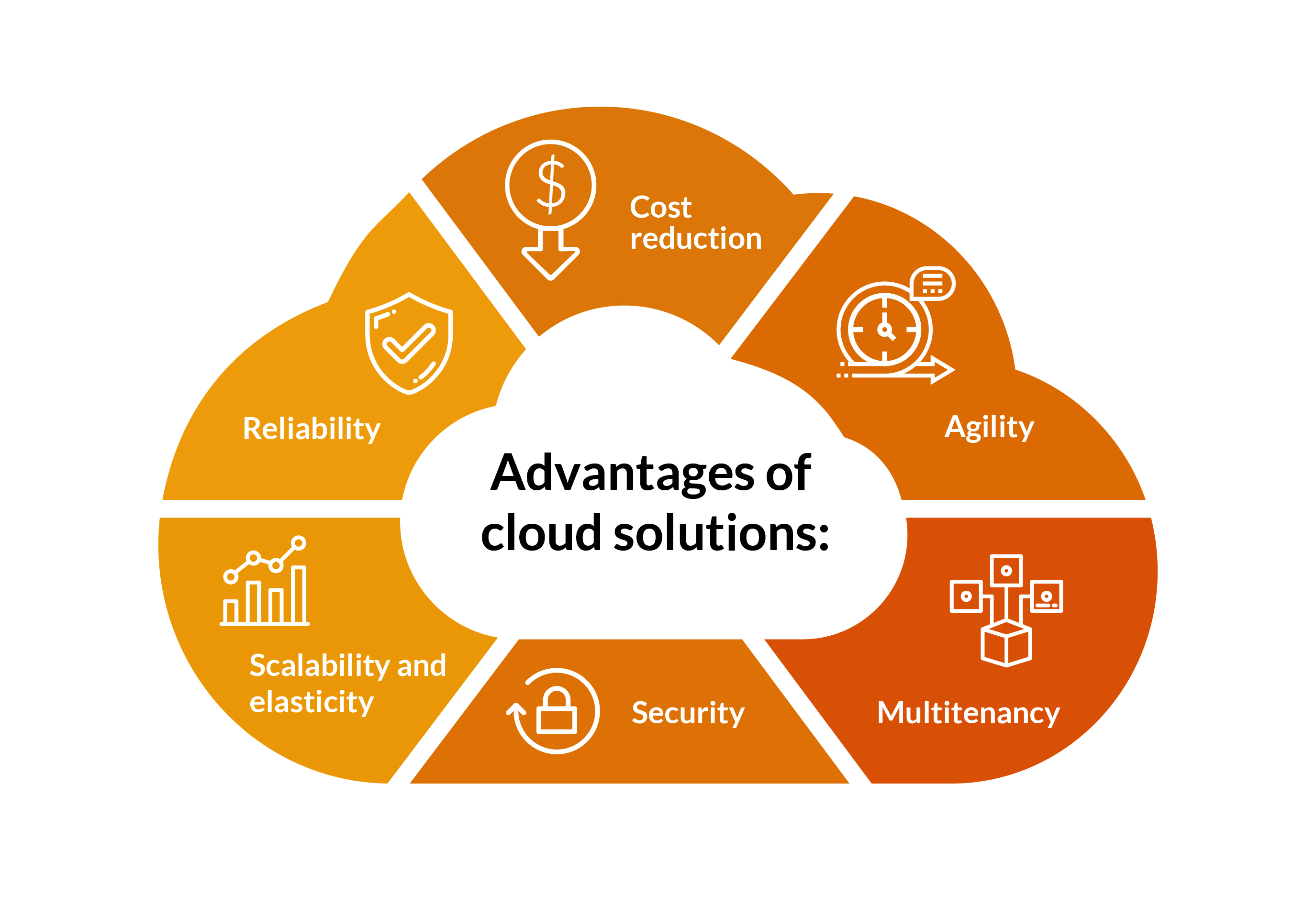Simplify Your Infrastructure With Cloud Services
As services navigate the ever-evolving landscape of innovation and data management, the role of cloud services in simplifying infrastructure has actually become progressively prominent. Just how can organizations efficiently browse this change and truly open the possibility of cloud solutions for simplifying their infrastructure?
Benefits of Cloud Services
Cloud services offer a streamlined technique to handling IT framework, giving companies with versatility, scalability, and cost-efficiency. Among the key advantages of cloud services is the scalability they provide. Services can conveniently scale their resources up or down based on demand, ensuring they just pay for what they utilize. This adaptability is especially beneficial for companies with fluctuating demands or those experiencing development.
Additionally, cloud services get rid of the demand for businesses to buy costly software and hardware. This cost-efficiency is a substantial benefit, particularly for tiny to medium-sized ventures looking to lessen in advance prices. By making use of cloud services, companies can access high-grade IT resources without the substantial price associated with typical facilities arrangements.
Furthermore, cloud solutions provide companies with the flexibility to access their data and applications from anywhere with a net link. This level of availability enhances partnership among teams, allows remote work, and boosts general efficiency. The adaptability offered by cloud solutions encourages services to adjust quickly to changing market problems and customer needs.
Expense Savings and Scalability
Along with the functional advantages highlighted earlier, the integration of cloud solutions right into a firm's facilities brings forth considerable expense financial savings and improved scalability. Cloud solutions supply a pay-as-you-go design, enabling services to range sources up or down based upon existing needs, consequently avoiding the prices related to preserving excess capability. This flexibility allows companies to adapt quickly to changing needs without incurring unneeded expenses.
Additionally, cloud solutions get rid of the requirement for upfront investments in software and hardware, reducing capital investment. Operating budget are likewise reduced as companies no much longer need to manage and maintain physical servers, causing reduced energy consumption and IT staffing costs. Furthermore, cloud solutions supply automated updates and upkeep, making sure that the facilities stays safe and up-to-date without needing hands-on treatments.
Enhanced Safety And Security Measures
When integrating cloud solutions right into a firm's facilities to secure delicate information and make certain compliance with industry policies,Implementing strict security procedures is critical. Cloud service companies supply boosted protection attributes such as data security, firewall software protection, and multi-factor authentication to reduce cybersecurity threats. Security helps safeguard information both at rest and in transit, making certain that only accredited users can access delicate details. Firewalls act as an obstacle between inner networks and external dangers, tracking and regulating incoming and outbound network web traffic. Multi-factor authentication includes an additional layer of safety and security by needing customers to provide numerous types of verification before accessing the cloud services.
In addition, regular security audits and compliance evaluations aid identify vulnerabilities and ensure adherence to sector requirements. Companies can likewise profit from features like computerized safety updates and real-time hazard monitoring offered by cloud provider. By prioritizing safety steps and staying proactive in addressing prospective dangers, businesses can confidently take advantage of cloud services while securing their valuable data from unauthorized access or violations.
Transitioning to Cloud Infrastructure
To efficiently integrate cloud services into a firm's infrastructure, an organized technique that addresses the shift in the direction of cloud-based services is critical. Transitioning to cloud infrastructure entails careful preparation and implementation to guarantee a smooth movement procedure. The very first step is to evaluate the present framework and establish which systems and applications are suitable for movement to the cloud. This assessment should consider elements such as data sensitivity, compliance requirements, and efficiency requirements.
When the assessment is total, a movement approach ought to be created. This technique should lay out the timeline, sources, and responsibilities for relocating each part to check out here the cloud. It is necessary to communicate this plan plainly to all stakeholders to ensure positioning and decrease interruptions during the shift.
Throughout the migration process, monitoring and screening are vital to determine and attend to any type of concerns without delay. Normal checkpoints should be established to track development and make required modifications. Furthermore, training for staff members on utilizing cloud solutions should be supplied to make certain a successful change and make the most of the benefits of the new facilities.
Finest Practices for Cloud Fostering
Effective fostering of cloud services pivots on the calculated alignment of service objectives with technical capabilities and business preparedness. To make sure a smooth shift to the cloud, organizations need to begin by carrying out a comprehensive assessment of their current infrastructure and identifying which workloads are best matched for cloud movement. It is essential to include crucial stakeholders from different divisions in the decision-making procedure to get buy-in and deal with any type of issues early on.
An additional ideal technique for cloud adoption is to focus on safety and compliance. Organizations should thoroughly assess the security actions offered by cloud provider and ensure that their data is shielded according to market criteria and regulatory demands. Implementing durable information security, accessibility controls, and normal safety and security audits can help reduce dangers connected with cloud adoption.

Conclusion

As companies browse the this hyperlink ever-evolving landscape of innovation and information administration, the role of cloud solutions in streamlining infrastructure has become progressively noticeable - linkdaddy cloud services. How can organizations properly browse this transition and absolutely open the potential of cloud services for streamlining their facilities?
Cloud solutions use a structured method to managing IT infrastructure, supplying companies with cost-efficiency, scalability, and versatility. By using cloud solutions, companies can access top quality IT sources without the significant rate tag connected with standard framework setups.
To make sure a smooth change to the cloud, organizations need to start by conducting an extensive analysis of their existing infrastructure and recognizing which work are best fit for cloud movement.